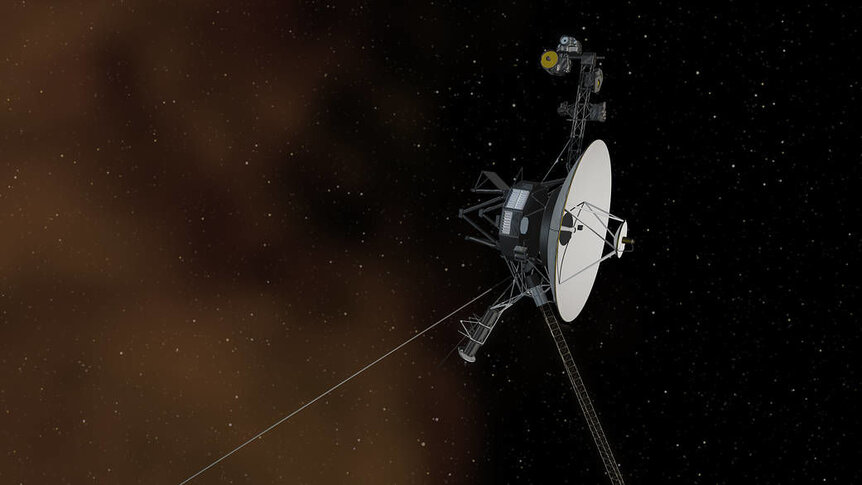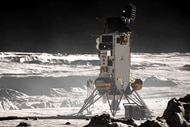After Six Months in Limbo, Voyager 1 Is Fully Operational Again
NASA's most distant spacecraft is returning science data again!
A hundred years from now, the crew of The Ark (returning to SYFY for Season 2 this July) will embark on the most daring adventure in human history. In Season 1 (now streaming on Peacock), they began their journey toward Proxima centauri, and a small rocky world where humanity hopes to find a new start. It’s a journey that will take them 4.2 light-years across space, and it won’t be easy.
If any real-world spacecraft has even an inkling of what they’ll endure, it’s Voyager 1. Almost 50 years after it first blasted off into space, Voyager 1 is showing signs of age. Recently, it seemed temporarily to lose its mind, but engineers on the ground identified and fixed the problem. Now, NASA has announced that Voyager 1 is fully operational and once again sending back science data from deep space.
For More on Voyager:
How NASA Fixed Voyager 1 from 15 Billion Miles Away
Why Did Voyager 1 Just Start Transmitting Gibberish from Deep Space?
The Life and Eventual Death of Voyager 1 and 2
Voyager 1’s Science Instruments Are Operational Again
Voyager 1 launched on September 5, 1977, two weeks after its twin, Voyager 2. It got first billing despite being second to launch, because the twin spacecraft went on different trajectories, to different targets, and Voyager 1 reached its destination first.
It’s been flying away from us for just shy of 47 years and is, at the time of writing, 15.2 billion miles from Earth. That’s only about 3/5000 the distance from here to Proxima centauri, just a fraction of a percent of a light-year, but it’s far enough to get into trouble. Back in November 2023, Voyager 1 started sending gibberish to Earth instead of decipherable data.
Over the last seven months, mission controllers identified a problem with the FDS (Flight Data System), responsible for packaging data before it’s sent to Earth. Eventually, they found that one of the chips in an onboard computer system was broken. Engineers fixed the problem by breaking up the information housed on that chip and relocating it to other parts of the system. Then they had to rewrite all of the relevant code to tell the spacecraft where everything had gone.
In April 2024, Voyager 1 started communicating again, but only some of its systems were working. Mission controllers were receiving information about the health of the spacecraft, but weren’t receiving science data. After the most recent change was beamed to the spacecraft, all four of Voyager 1’s instruments are now operational. Those instruments – the Cosmic Ray Subsystem (CRS), Low-Energy Charged Particles (LECP), Magnetometer (MAG), and Plasma Wave Subsystem (PWS) are used to study plasma waves, magnetic fields, and particle interactions in interstellar space.
There’s still a little bit of work to do to get Voyager 1 back in tip-top shape. In particular, Voyager 1’s three onboard computers aren’t quite synchronized. Engineers need to adjust the timekeeping systems to ensure the spacecraft can enact commands at the right times. After spending half a century in space, Voyager 1 is flying with a bit of a limp, but it’s not doing too bad for being one of the two oldest active spacecraft in the fleet.
Season 2 of The Ark premieres on SYFY beginning Wednesday, July 17 at 10/9c. Catch up on the entirety of Season 1, streaming now on Peacock!















































